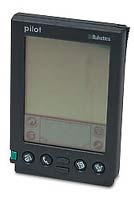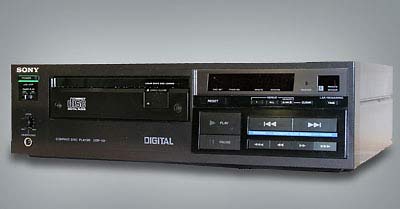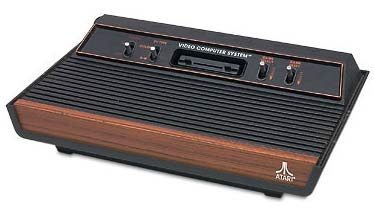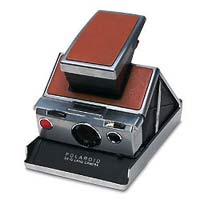|
The 50 greatest gadgets of the past 50 years
(PC World)
Updated: 2005-12-27 11:29 4. PalmPilot 1000 (1996)

PalmPilot 1000
(1996) |
The PalmPilot 1000 was everything the
Apple Newton MessagePad (#28) wanted to be: a "personal data assistant" small
enough to fit in your shirt pocket, with enough flash RAM (128KB) to hold a
then-impressive 500 names and addresses. The handwriting recognition actually
worked (once you mastered the arcane Graffiti software), and best of all, you
could sync your data with a PC or Mac desktop application. The brilliance of the
Palm concept was its recognition that people wanted a supplement to their
computers, not a substitute. Subsequent models grew smaller and more powerful,
but were basically refinements to the original PalmPilot's elegant simplicity.
PCW photo by Rick Rizner.
5. Sony CDP-101 (1982)

Sony CDP-101
|
The first commercial compact disc player signaled a technological sea change
that ultimately caused millions of music lovers to ditch their turntables. The
boxy CDP-101 wasn't especially sleek, and at $900 it was priced for audiophiles,
but it ushered in the age of digital sound--no more hisses, scratches, pops, or
skips. Now, with SuperAudio CD and DVD-Audio offering vastly superior sound, and
MP3 downloads dominating music sales, CD players may eventually join turntables
and 8-track machines (#46) as relics of our audio past. But they will sure have
sounded good while they lasted. For more, read a contemporary review of the
CDP-101. Photo courtesy of Pavek Museum of Broadcasting.
6. Motorola StarTAC (1996)
|

Motorola
StarTAC
| The StarTAC was the first mobile
phone to establish that design matters as much as functionality, leading to
today's profusion of stylish cell phones--most notably the Motorola Razr (#12).
No phone of its era was more portable than the StarTAC: You could clip the
3.1-ounce unit to your belt and go anywhere, which made carrying a cell phone a
lot more appealing. The StarTAC let you plug in a second battery to extend your
talk time, and was the first phone to sport the vibrate option used in Motorola
pagers (#13). Another plus: As the first clamshell-style phone, it looked a
little like the communicators from Star Trek. Beam us up, Scotty. Photo courtesy
of the Integrated Electronics Engineering Center and Prismark Partners.
7. Atari Video Computer System (1977)
|

Atari Video
Computer System
|
Later known as the Atari 2600, the VCS brought video games out of the arcade
and into America's living rooms. It was a snap to set up: Just plug the
clunky-looking box into your TV set and grab the joystick. The Atari 2600 was
the first successful console to use game cartridges, which allowed consumers to
play multiple games on the same system and created a huge market for
crude-looking but addictive titles such as Space Invaders and Pac Man. The
Atari's games may not have looked much like Grand Theft Auto, but its influence
can be felt in today's Xboxes, PlayStations, and GameCubes. AtariAge has more
details. Pong, anyone? PCW photo by Rick Rizner; Atari VCS courtesy of Mike
Mika.
8. Polaroid SX-70 Land Camera (1972)

Polaroid SX-70 Land
Camera (1972) | The SX-70 was a thing of beauty.
Just point, shoot, and watch the image develop before your eyes. When you're
done, fold up the 7-by-4-inch unit and stick it in your bag. It was the first
Polaroid to automatically eject the snapshot and produce images, without making
you wait 60 seconds and peel off the outer wrapper of the film. The SX-70
combined simplicity with immediacy, making it the direct forebear of today's
low-end digital cameras. More than 30 years later, its design still turns heads,
and some fans still use it. PCW photo by Rick Rizner; camera courtesy of Adolph
Gasser Photography, San Francisco.
|